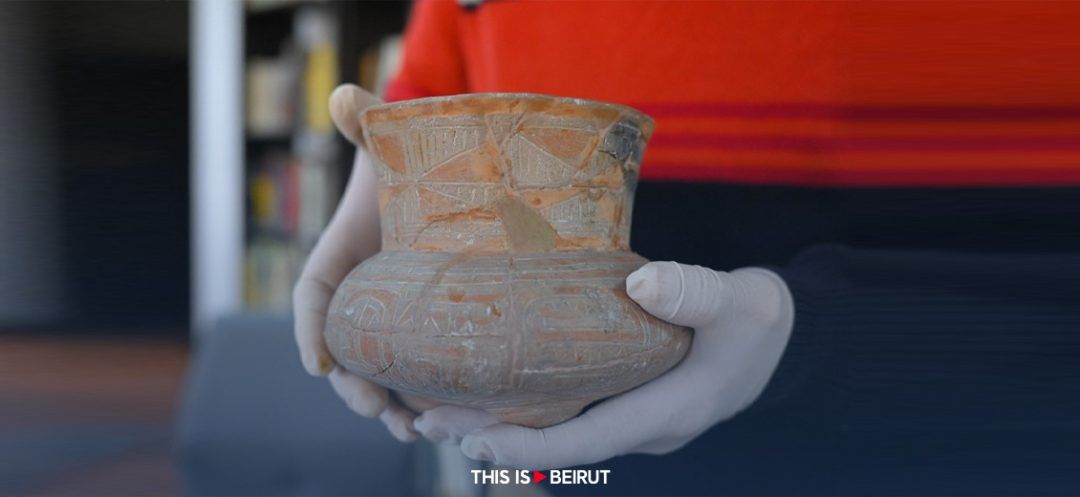
Roads and erosion threaten an ancient Amazonian civilization in Ecuador. Nestled in the dense jungle of eastern Ecuador, this ancient civilization, dating back 2,500 years, is now facing major challenges that could compromise its historical heritage.
For centuries, the jungle served as a protective shield for these ancient peoples. However, the advancement of modernity in the form of road construction, erosion due to human activity, and agricultural practices now threaten their existence. In the Upano Valley, a region located south of the Ecuadorian Amazon, lies a “lost city” discovered in 1978. This city, bearing witness to ancient settlements in the region, is dotted with mounds of varying sizes, connected by pathways. Unfortunately, these mounds are now threatened by human activities.
Alejandra Sánchez, a Spanish archaeologist who has been studying this heritage for a decade, warns of the urgent need for a protection plan to preserve these structures. With the assistance of a state project launched in 2015, she and other researchers used sophisticated technology to identify nearly 7,400 mounds, exhibiting various shapes such as Ls, Ts, Us, squares, rectangles and ovals. However, when Alejandra Sánchez visited the region a few years ago, she was dismayed to find that some of these mounds had already been damaged by activities related to road construction, highlighting the urgent need for intervention to safeguard this precious heritage.
In addition to threats from modern infrastructure, erosion, deforestation and intensive agriculture also pose significant risks to these mounds. The massifs, some measuring up to four meters in height and twenty meters in length, are vulnerable to natural elements such as rain, wind and erosion caused by agricultural activities. Furthermore, the Upano River, which was the cradle of the indigenous culture of the same name, suffers from the damage of illegal mining, further exacerbating the threats to this historical site.
Faced with these imminent dangers, the National Institute of Cultural Heritage (INPC) plans to delineate the boundaries of the complex in the province of Morona Santiago, in the southeast of the country, with the aim of protecting this precious heritage. Ecuadorian archaeologist Alden Yépez from the Private Catholic University of Ecuador emphasizes the importance of preserving this heritage, comparing it to that of more famous civilizations like the neighboring Peruvians or the ancient Mesoamerican peoples.
Archaeological research in the region significantly expanded in recent years, notably with the use of technologies such as LiDAR (Light Detection and Ranging), which enabled the identification of new sites and a better understanding of the extent of this ancient civilization. However, it is crucial to understand these discoveries in context, taking into account the crucial role played by local indigenous communities, such as the Shuars and Achuars, in preserving these cultural vestiges.
As the Upano region gains international recognition through recent archaeological discoveries, it is essential to redouble efforts to protect this unique heritage. The discoveries made so far may only scratch the surface, and it is likely that many other archaeological sites remain to be discovered in this region, rich in history and culture.
Finally, current research suggests that the Upano civilization had a sophisticated political, economic and religious organization, challenging the preconceived notion that the Amazon was an uninhabited space or only inhabited by nomadic peoples. Future work in the region should focus on a better understanding of these structures and their functioning, in order to highlight the richness and diversity of ancient cultures in the Ecuadorian Amazon.
With AFP
For centuries, the jungle served as a protective shield for these ancient peoples. However, the advancement of modernity in the form of road construction, erosion due to human activity, and agricultural practices now threaten their existence. In the Upano Valley, a region located south of the Ecuadorian Amazon, lies a “lost city” discovered in 1978. This city, bearing witness to ancient settlements in the region, is dotted with mounds of varying sizes, connected by pathways. Unfortunately, these mounds are now threatened by human activities.
Alejandra Sánchez, a Spanish archaeologist who has been studying this heritage for a decade, warns of the urgent need for a protection plan to preserve these structures. With the assistance of a state project launched in 2015, she and other researchers used sophisticated technology to identify nearly 7,400 mounds, exhibiting various shapes such as Ls, Ts, Us, squares, rectangles and ovals. However, when Alejandra Sánchez visited the region a few years ago, she was dismayed to find that some of these mounds had already been damaged by activities related to road construction, highlighting the urgent need for intervention to safeguard this precious heritage.
In addition to threats from modern infrastructure, erosion, deforestation and intensive agriculture also pose significant risks to these mounds. The massifs, some measuring up to four meters in height and twenty meters in length, are vulnerable to natural elements such as rain, wind and erosion caused by agricultural activities. Furthermore, the Upano River, which was the cradle of the indigenous culture of the same name, suffers from the damage of illegal mining, further exacerbating the threats to this historical site.
Faced with these imminent dangers, the National Institute of Cultural Heritage (INPC) plans to delineate the boundaries of the complex in the province of Morona Santiago, in the southeast of the country, with the aim of protecting this precious heritage. Ecuadorian archaeologist Alden Yépez from the Private Catholic University of Ecuador emphasizes the importance of preserving this heritage, comparing it to that of more famous civilizations like the neighboring Peruvians or the ancient Mesoamerican peoples.
Archaeological research in the region significantly expanded in recent years, notably with the use of technologies such as LiDAR (Light Detection and Ranging), which enabled the identification of new sites and a better understanding of the extent of this ancient civilization. However, it is crucial to understand these discoveries in context, taking into account the crucial role played by local indigenous communities, such as the Shuars and Achuars, in preserving these cultural vestiges.
As the Upano region gains international recognition through recent archaeological discoveries, it is essential to redouble efforts to protect this unique heritage. The discoveries made so far may only scratch the surface, and it is likely that many other archaeological sites remain to be discovered in this region, rich in history and culture.
Finally, current research suggests that the Upano civilization had a sophisticated political, economic and religious organization, challenging the preconceived notion that the Amazon was an uninhabited space or only inhabited by nomadic peoples. Future work in the region should focus on a better understanding of these structures and their functioning, in order to highlight the richness and diversity of ancient cultures in the Ecuadorian Amazon.
With AFP
Read more




Comments